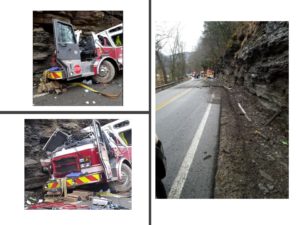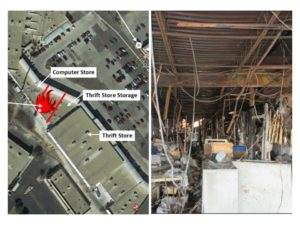By: Robert Avsec, Executive Fire Officer
Prompted several years ago by the high number of annual firefighter deaths from preventable causes, the International Association of Fire Chiefs and International Association of Fire Fighters called on the American fire service to conduct a “Safety Stand Down.” The stand down was patterned after U.S. military stand downs: a cessation of all daily activity by operational units, except for mission-critical activities, to focus everyone’s energies and efforts on reviewing operational practices and plans to identify and remediate causes of accidents.
Safety Stand Down 2020, June 14-20
 Military safety stand downs typically are prompted by clusters of similar types of accidents in a short period of time involving a specific population or operation. For example, the U.S. Navy ordered a safety stand down in response to several crashes of aircraft during training missions in a short period of time.
Military safety stand downs typically are prompted by clusters of similar types of accidents in a short period of time involving a specific population or operation. For example, the U.S. Navy ordered a safety stand down in response to several crashes of aircraft during training missions in a short period of time.
The original fire service safety stand down was an idea in that same vein: we’ve got serious issues that are leading to unacceptable firefighter deaths and we need to get everyone to stop what they are doing for a short period of time and really focus on solving the problems.
So why do we need a safety week? For years we’ve been saying that our fire prevention activities need to happen 24/7/365, not just during one week in October. So why should we compartmentalizing firefighter safety to one week a year? We still have the same unacceptable deaths and they’re still happening from the same preventable causes. Shouldn’t safety be a 24/7/365 proposition?

At the NIOSH website, you can conduct a search for published Firefighter Fatality Reports and filter your search request by one or more of the following: state, year, medical cause of death, traumatic cause of death.
We in the American Fire Service need to figure out how change our organizational culture so that safety is not an activity, but a way of doing business every day, every week, and every year. We don’t need a safety week or a safety stand down to make that happen. I think that many departments are not taking full advantage of the information that’s contained in every NIOSH (National Institute for Occupational Health) Firefighter Fatality Investigation Reports
I’ve been reading these reports for years and the thing that makes my heart ache the most is that I read the same findings from NIOSH for the same incidents types where a firefighter lost their life.

Photos on left show pumper following extrication of personnel. Photo on right shows the direction of travel as pumper hit rock outcroppings from mountain side.
In March 2018, a pumper crashed while en route to a report of an accident with injuries on an Interstate highway. A 46-year-old assistant chief and a 40-year-old lieutenant died when the pumper struck a rock outcrop that paralleled the roadway. The 46-year-old fire chief (the fire apparatus operator), a 59-year-old fire fighter and a 17-year old junior fire fighter were injured. This excerpt is from the NIOSH report published in August 2019:
Contributing Factors
- Failure to wear seat belts
- Distraction of the fire apparatus operator
- Speed of the apparatus
- Road conditions – wet roadway
- Limited space between the roadway, roadway shoulder, and the rock outcropping
Key Recommendations
- Fire departments should require a written standard operating procedure (SOP) for the use of seat belts is implemented and enforced while riding on any fire department apparatus or vehicle
- Fire departments should ensure the vehicle operations training program includes topics such as road design, road conditions, and driving during inclement weather
- Fire departments should ensure that fire apparatus operators are trained in techniques for maintaining control of their apparatus at all times
- Fire departments should ensure all members that operate fire apparatus meet the requirements set forth in NFPA 1002: Standard for Fire Apparatus Driver/Operator Professional Qualifications.
Here’s another excerpt from May 2017, when a 31-year-old male career fire

Photo on left shows aerial view of scene (fire indicated by flame). Photo on right is example of interior conditions looking from Side “D” interior exposure (computer store) back towards fire area.
fighter died after fire conditions rapidly deteriorated inside a commercial strip mall.
Contributing Factors
- Arson fire
- No sprinkler system in commercial structure
- High wind conditions
- Zero-visibility and cluttered floor space impeded hose line advancement
- Freelancing fire tactics (Ladder company searching for fire beyond protection of hose stream)
- Crew integrity not maintained
- Uncoordinated ventilation (rear door opened at Side Charlie).
Key Recommendations
- Fire departments should integrate current fire behavior research findings developed by the National Institute of Standards and Technology (NIST) and Underwriter’s Laboratories (UL) into operational procedures by developing or updating standard operating procedures, conducting live fire training, and revising fire ground tactics including how to recognize and fight ventilation-limited fires, hose stream tactics, and wind-driven fires.
- Additionally, state, local, and municipal governments, building owners and authorities having jurisdiction should: Consider requiring the use of sprinkler systems in commercial structures.
This is the year 2020, right? So why are we still killing firefighters from individual and organizational behaviors that we know are wrong and that we know can kill a firefighter? Why are we still killing firefighters because Fire & EMS organizations are not compliant with NFPA Standards–Our standards, written by us, vetted by us, and approved by us!–despite the fact that many of our fundamental NFPA standards have been in existence for many years?
We need leadership at all levels of our organizations who don’t just talk about firefighter deaths being unacceptable, but work diligently to identify and eradicate safety deficiencies in their organization today. How many of our leaders are taking the information from NIOSH Firefighter Fatality Reports and using that information to take a good, hard and objective look at their organization and asking the tough question, “What are we doing to prevent this from happening here?
Are you asking that question in your department? If so, what kinds of answers are you getting?
 Fire & EMS Leader Pro The job of old firefighters is to teach young firefighters how to become old firefighters!
Fire & EMS Leader Pro The job of old firefighters is to teach young firefighters how to become old firefighters!